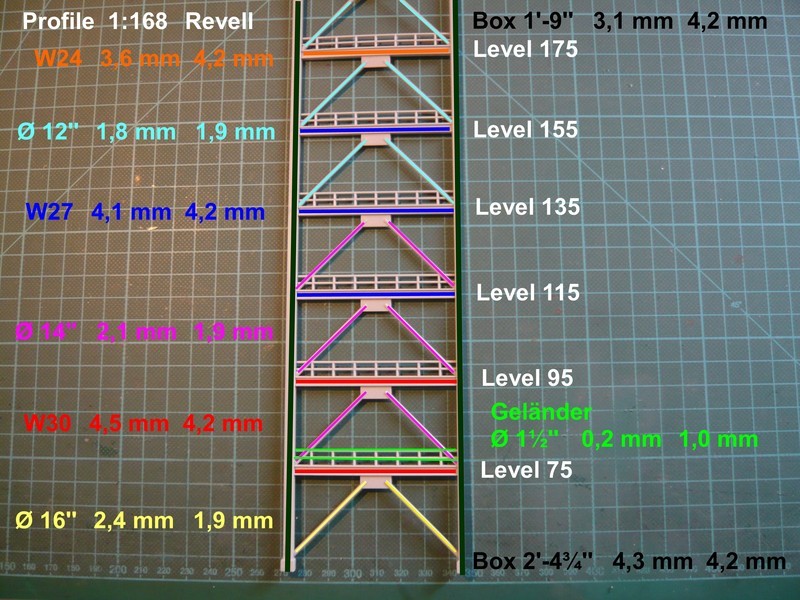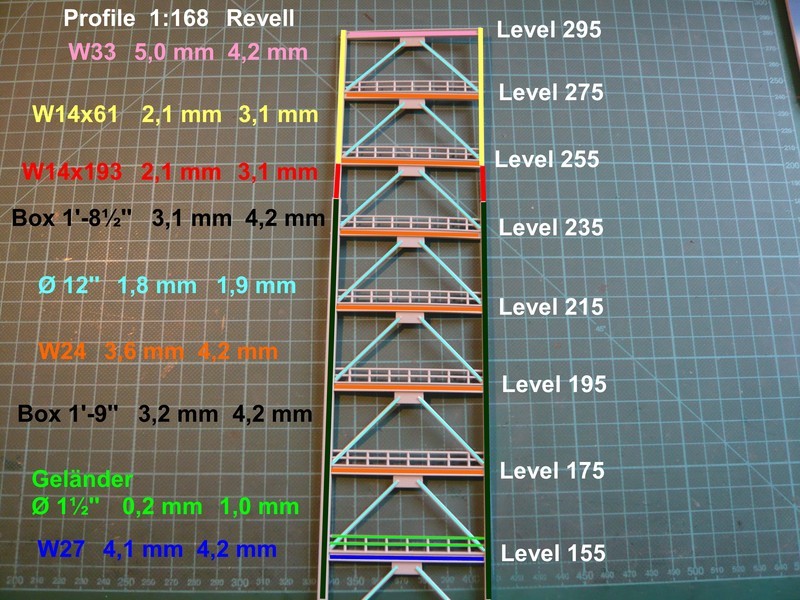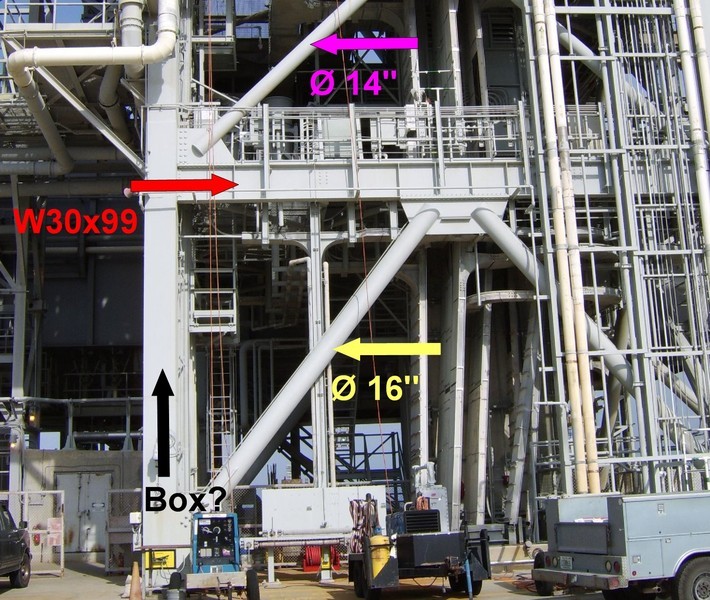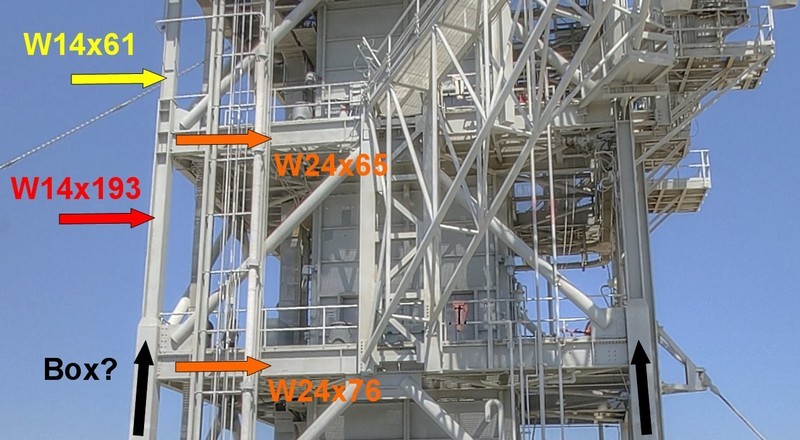Hello everybody,
and thus now in detail to the FSS frame construction, which is undersized by Revell and quite simplified. And as we have already noted, all FSS levels are too low, due to the 7,5 cm too low height of the tower (1:168). ![]()
And now to the individual structural elements of the frame structure, the dimensions of which I found with two exceptions in the Pad 39B Dismantling plans after a long search. And this concerns specifically the edge lengths of the upwardly tapering square tubes (Box Columns) at the foot of the tower and at the transition to the W-beams above Level 235. But I was quite glad to have found at least two box dimensions in the central region. ![]()
So I calculated the edge length of the box-spars at the bottom of the tower from this picture based on the height (30’') of the first frame support W30x99,
and the corresponding edge length of the spar at the transition from this picture based on the local frame support W24x76.
And therefore still to these two profiles after the transition, which however, are not gradated in the Revell kit. ![]()
While the W14x193 is a typical H-beam with a square cross section of 15,5’‘x15,7’', the following part W14x61 (13,9’‘x10,0’') corresponds more likely to an I-beam.
And so this looks in detail, whereupon I again have indicated the scaled 1:168 values next to the relevant profiles, and to the right the dimensions of the Revell parts. I hope that the details are still to read and the colors are not be too confusing. ![]()
What should one immediately notice is the fact that all Revell frame supports from top to bottom have the same height of 4,2 mm, and all diagonal struts the same diameter Ø 1,9 mm. During the struts in the lower part to Level 135 are slightly undersized, in the upper part they nearly correspond with the actual conditions.

The deliberate cross section reduction of the frame supports however Revell has less well implemented upwards.![]()
It is similar with the side beams, which have the same cross-section from the bottom up to the transition and do not taper towards the top. ![]() And that is in fact already a clear difference, because these huge square tubes taper from approx. 760 mm, edge length (2’4¾’') at the bottom (wall thickness 90 mm), after all, just over half to approx. 356 mm (1’8½’') at Level 235.
And that is in fact already a clear difference, because these huge square tubes taper from approx. 760 mm, edge length (2’4¾’') at the bottom (wall thickness 90 mm), after all, just over half to approx. 356 mm (1’8½’') at Level 235.

But the really most serious deviation from reality represent the railings, because they are lot too strong with Ø 1 mm, what might find less attention. However, one must say that these diameters can not be realized by means of injection molding, but rather probably only with PE parts. ![]()
So my mission of inventory making of the greatest deviations of the Revell kit in my view would now almost complete with mainly. ![]()
How one should deal with it, will have to be shown therefore, ![]() and everybody has to decide for itself.
and everybody has to decide for itself.
Therefore next time another approach to the diagonal struts in the lower section to Level 135 that I’ll probably replace entirely. ![]()
![]()

